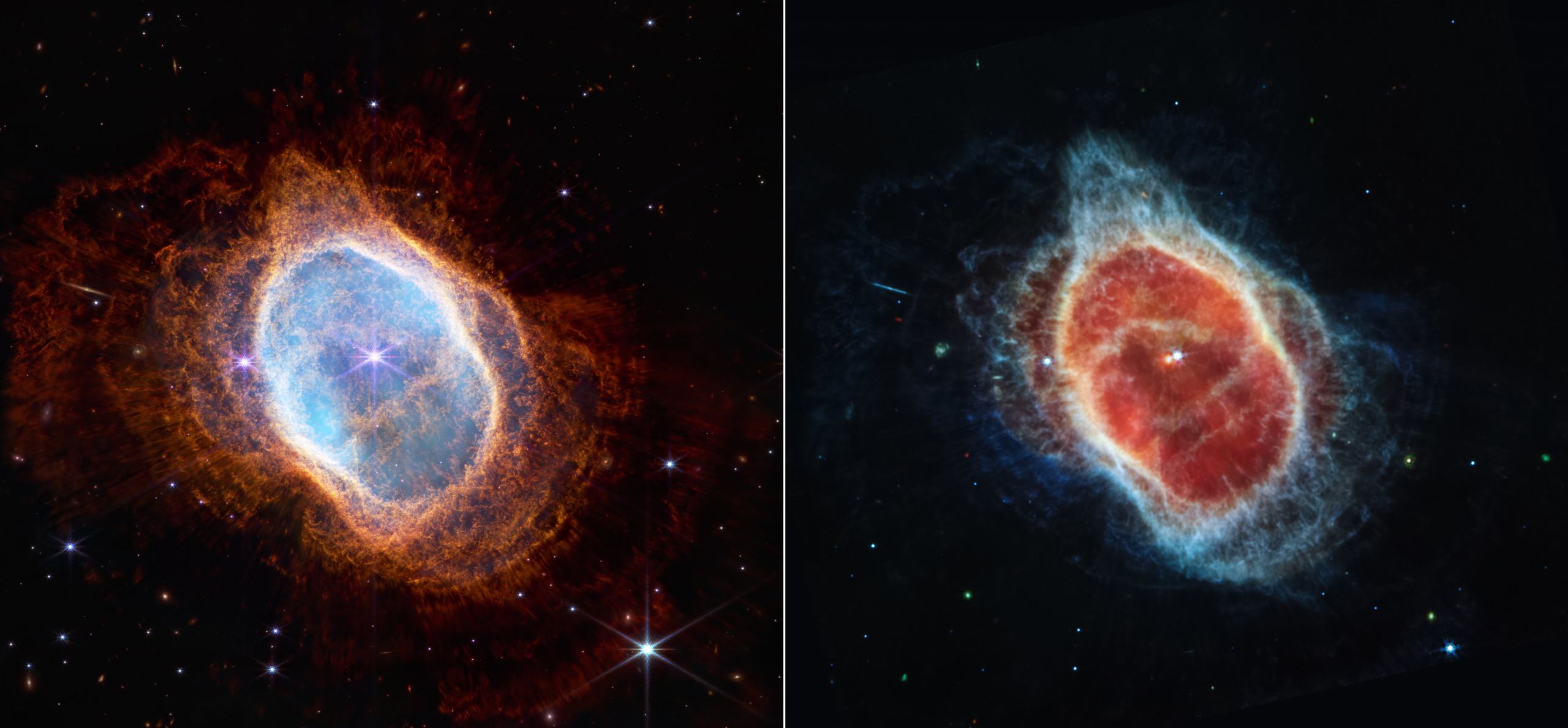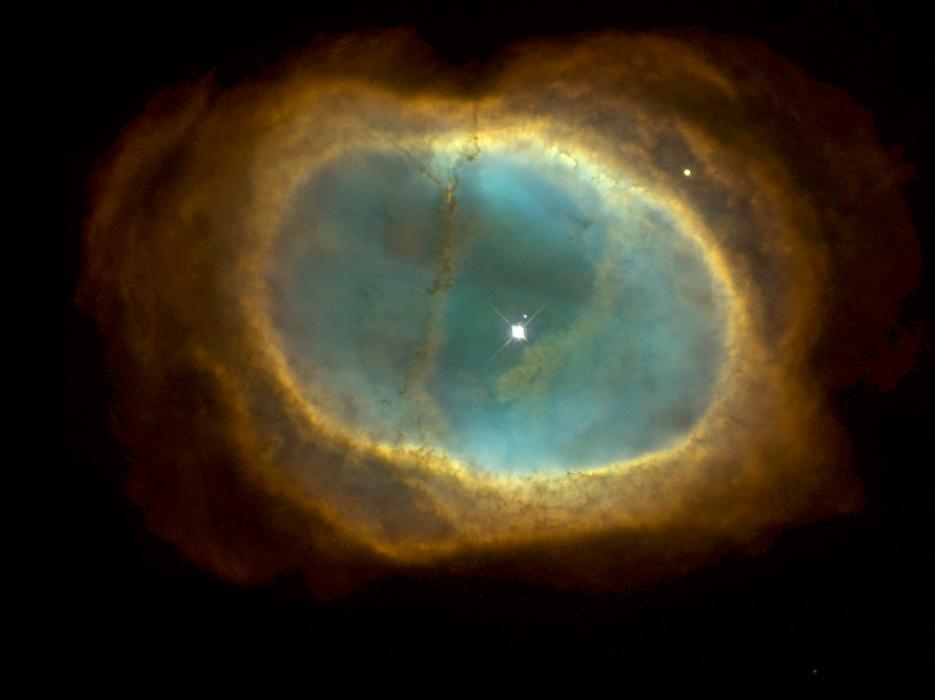

JWST images of the Southern Ring Nebula as seen from the telescope's NIRCam (left) and MIRI (right). Credit: NASA, ESA, CSA, and STScI
Two thousand five hundred years ago, during the height of the bronze age, an old red star died. Its outer layers expanded over time, becoming what is now known as the Southern Ring Nebula, or less romantically, NGC 3132. By the looks of it, this planetary nebula looks like many others. As Sun-like stars die, they swell to become red giants before becoming a white dwarf, and their outer layers typically become a planetary nebula. But a recent study finds that this particular nebula formed in a way quite messier than we had thought.
The new study is based on data from the James Webb Space Telescope as well as other observatories and reveals details never seen in a planetary nebula. The central star of the nebula is now a white dwarf about half the size of the Sun, and this new study finds it isn’t alone. Within the layers of gas and dust ejected by this star, there are swirls as if the nebula was mixed by a companion star. This low-mass companion orbits the white dwarf at a distance of 40 – 60 AU, or about the distance of Pluto from the Sun.
Closer to the white dwarf there is a dusty disk of material, typically caused by a close companion. The team can’t see this star directly. It is likely hidden within the disk, shaping the nebula’s interior. Combined with a more distant bright companion that was discovered before this study, This nebula is likely a 4-star system.


Given the level of detail, we can now see how the old red giant went through quiet periods and times of more active ejecta. Layers of ejecta are illuminated by the stars, and this will give astronomers a better understanding of how the star evolved during its end of days. Already the team has calculated that the progenitor star had a mass of about 2.9 Suns. Further studies will examine the chemical composition of the nebula, and help astronomers better understand how these stars seed the galaxy with heavier elements.
The Southern Ring Nebula is part of a collection of 109 nebulae known as Caldwell objects. The list was compiled by astronomer Patrick Moore as a list of objects in the southern hemisphere that could have the appearance of comets in a small telescope. The list was meant to be analogous to the more popular Messier object list of the northern hemisphere. If the Southern Ring Nebula had been seen in the northern hemisphere, it might have been listed as a Messier object. Which is perhaps fitting given its messier origin as a planetary nebula.
Reference: De Marco, Orsola, et al. “The messy death of a multiple star system and the resulting planetary nebula as observed by JWST.” Nature Astronomy (2022): 1-12.
In 2007, astronomers discovered the Cosmic Horseshoe, a gravitationally lensed system of galaxies about five-and-a-half…
Venus differs from Earth in many ways including a lack of internal dynamo driving global…
The journey to Mars will subject astronauts to extended periods of exposure to radiation during…
Anthropogenic climate change is creating a vicious circle where rising temperatures are causing glaciers to…
Satellites often face a disappointing end: despite having fully working systems, they are often de-orbited…
Astronomers have known for some time that nearby supernovae have had a profound effect on…